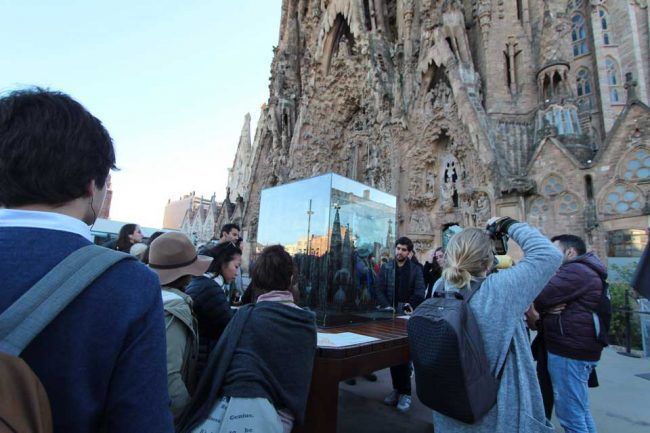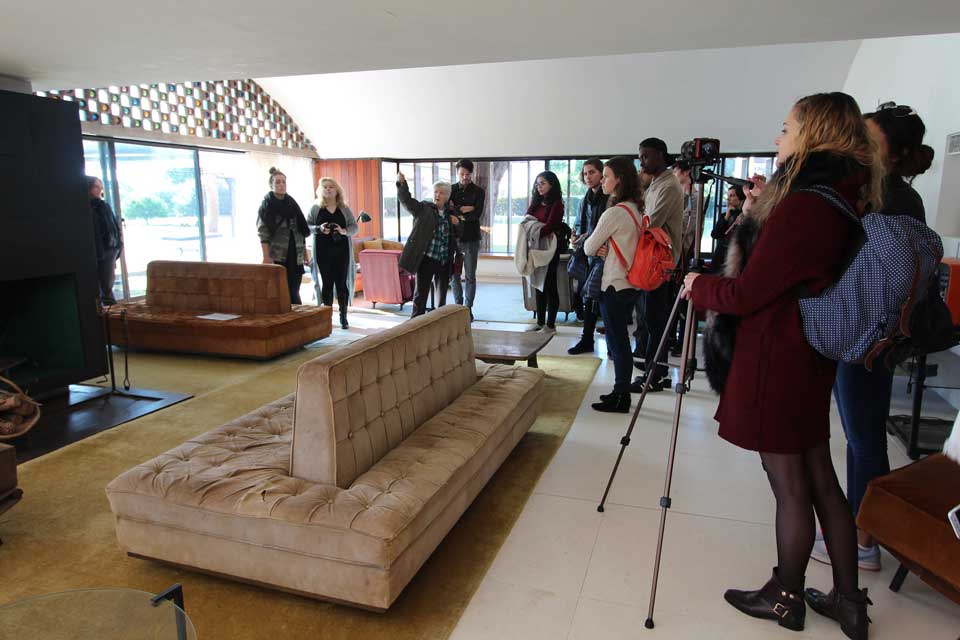The deputy director of Architecture, Ignacio Juan, gave a presentation on the integration of study trips as a subject in the 5-year degree at CEU UCH at the 5th Workshop on the Innovative Teaching of Architecture in Seville.

“40 subjects, 10 destinations, 5 years and one shared tool: travel”. Since 2011, the Graduate School of Technical Teaching (ESET) at CEU Valencia has integrated study trips to get to know architectural works and their creators “in situ”. It is an essential element of the degree and not an extracurricular activity. From this year on, CEU UCH is proposing to integrate trips into every subject during the 5-year degree as a core material and backbone of studying. The project was presented on the 16th and 17th of November at the 5th Workshop on the Innovative Teaching of Architecture JIDA’17 which was celebrated at the University of Seville. The deputy director of Architecture at CEU Valencia, Ignacio Juan, explained the report “40 subjects, 10 destinations, 5 years and one shared tool: travel” which he worked on along with professors Alfonso Díaz, Andrés Ros and Ana Ábalos.

Why is travel an essential part in the training of an architect?
Travel has always been linked to an architects training and for some of the great masters of architecture it constituted as their only architectural education. However, Architecture Schools have generally only used this practice as an extra-curricular activity, unrelated to the content and development of the syllabus. Our plan consists of converting them into core study material.
What is this innovative proposal from CEU UCH that will train architects while travelling?
At our School of Architecture, we have been travelling with the students every year since 2011, always with the objective of supplementing their training. Because of our experience in these past couple of years, what we are planning on doing is converting these trips into a “core subject” within the degree, sharing and coordinating the content with the rest of the subjects in a common guide. It focuses on 10 destinations, which have been strategically developed into successive cycles over 5 years, parallel to the already established semesters at degree level. This is the proposal that we presented at the 5th Workshop of Innovative Teaching of Architecture JIDA’17 at the University of Seville.
How did you initially plan the trips at CEU UCH and how have they evolved as a teaching tool whilst training architects?
In the early years, we planned the trips so that we could visit the maximum number of works and from different architects in good time with the objective of getting the best results out of the time away. Then we moved towards “artist” trips, we are already in the second phase of integrating the trip as a teaching tool.

What do “artist” trips consist of?
We try to organise the trips in a way that we can get an in depth look at the work of a unique architect in each trip. In this format we have visited Finland to look at the complete works of Alvar Aalto; Portugal to look at the works of Fernando Távora, Álvaro Siza and Eduardo Souto de Moura; the last trip was to Denmark looking at the work of Arne Jacobsen.
What are the expected results of this teaching innovation of turning travel into a core subject? Why are you taking a step forward with integrating it into the curriculum?
The School of Architecture at CEU UCH now has students from more than 30 different nationalities: from Sweden to Mozambique, Canada to Malaysia, and Ukraine to Egypt. With this plan, in which travel is becoming a core subject of the degree, the ability to bring together all the different areas guarantees that our students will gain knowledge of cultural values, the places and buildings that they visited. They can complete their training, which is now of course international, with the life experience from the trips. The course that has just started is the beginning of this new teaching challenge that we presented on a national level at the University of Seville.
Why did you choose the Workshop on the Innovative Teaching of Architecture (JIDA’17) to present the project?
These workshops are organised by the Group for Innovation and Teaching Logistics in Architecture (GILDA), in collaboration with the Institute of Education Sciences (ICE-UPC) and the Arquiotectura+Prospectiva research group (humAP). The 5th edition of these workshops were celebrated on the 16th and 17th of November 2017at the Graduate School of Architecture in Seville (ETSA-US) with the support of the University of Seville (US) and their Department of Architectural Projects (DP), the Official School of Architects in Seville (COAS) and the Arquia Foundation. It was, without a doubt, a suitable forum to present this innovative teaching project for the training of architects, which we have already put into action at CEU UCH to the Spanish academic community.


























